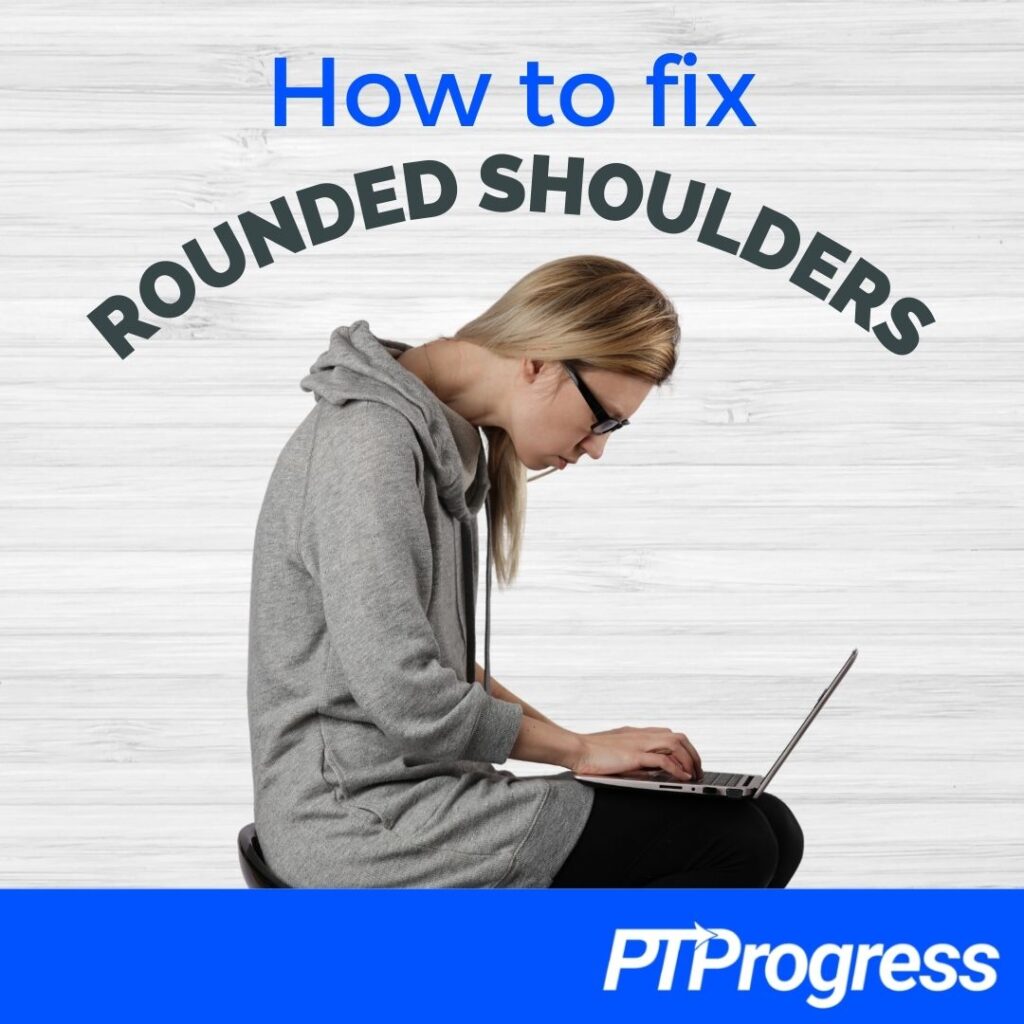Many of my patients come into the clinic with rounded shoulders, a common side effect of modern living. Time spent hunching over computers, workbenches, and steering wheels adds up to poor posture, with a rounded back as proof. So if you’re looking to straighten up your posture for good, check out these 5 easy moves to fix rounded shoulders.
These 5 exercises are my absolute favorites for fixing rounded shoulders. Not only will they increase the range of motion in your shoulder, they will also improve your thoracic mobility. A stronger, more flexible spine is your best defense against the Hunchback of Poor Posture. Best of all, these effective exercises are easy to do at home with minimal equipment.
5 Ways to Fix Rounded Shoulders
1. Wall Slide + Lift
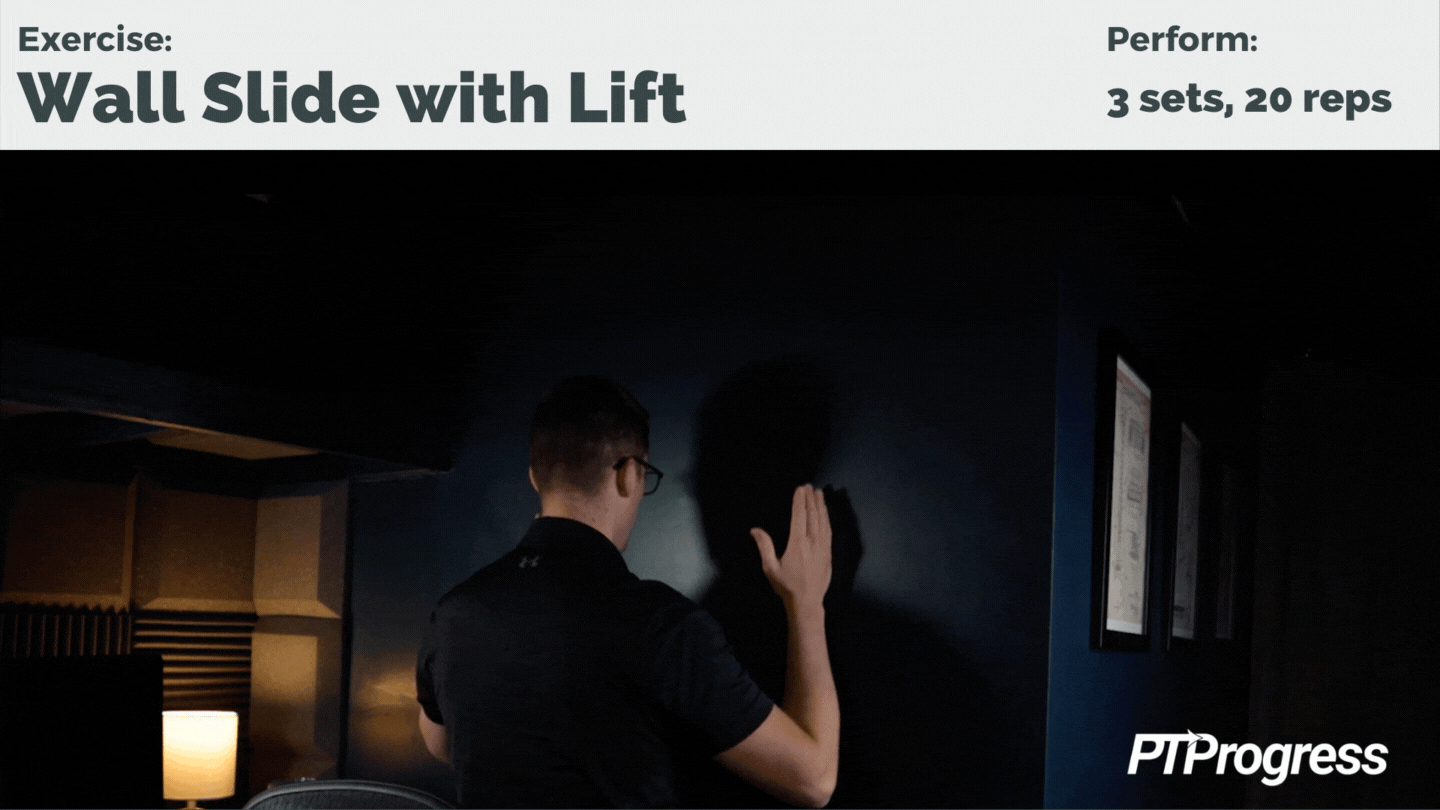
Find any unobstructed wall or door and place your hands on it about shoulder-width apart, palms facing each other. Next, while keeping your head in a neutral position, slide your arms up the wall. When you get to the top of your range, slightly lift away from the wall. Then return the arms and slide them back down to complete one repetition. Aim for 20 reps.
This movement alone may tire out your shoulders and mid-back, because if you have poor posture, your shoulder muscles are probably weak. By strengthening them, you can undo that rounded shoulder posture and fix the problem for good.
On their own, plain wall slides are great for relieving shoulder pain. But the lift at the top of the slide gives this exercise extra oomph, improving both thoracic mobility and the upward rotation of your scapula. It’s a one-two punch for fixing rounded shoulders.
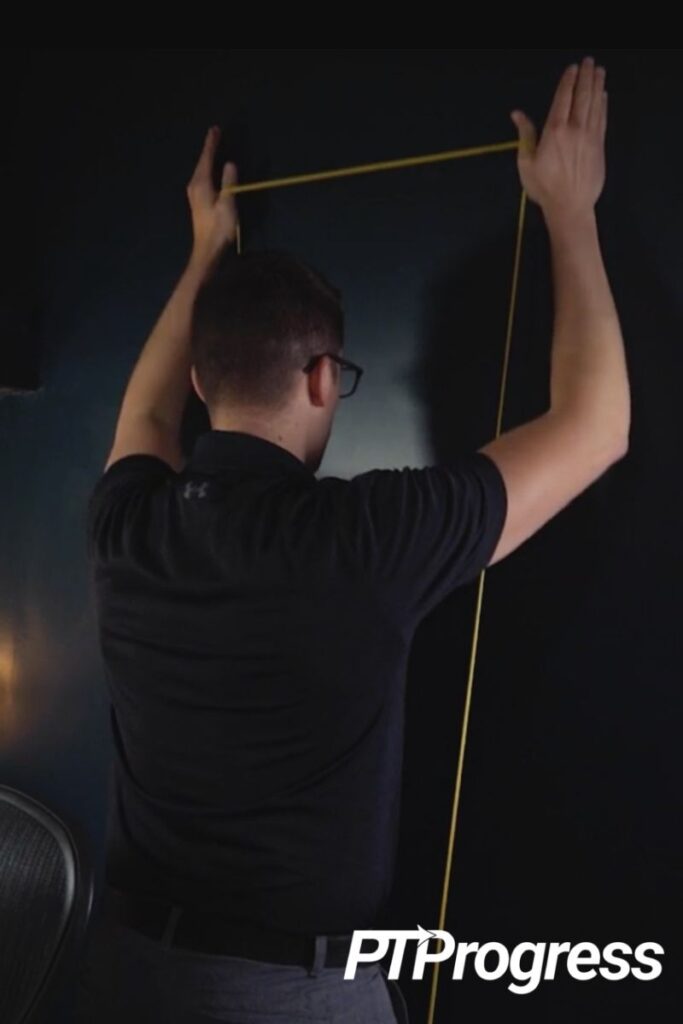
You can take it a step further and get even more out of this exercise by using resistance bands. Stand on both ends of a resistance band and loop your thumbs around the band at its halfway point. Once you place your hands on the wall, the band should make the outline of a triangle, connecting your two hands and your feet. Check out the photo for reference.
Then, with the band secure, glide your hands up along the wall. This additional resistance will engage the rotator cuff and lower trapezius, muscles which help keep your shoulders in the right place. If you need some resistance bands, I highly recommend this set from Bob and Brad, some of my PT buddies from the internet world. Their resistance bands are on par with any other brand – at half the price.
2. Press and Stretch
If you have rounded shoulder posture, you likely also have tightness in your chest. With an active press and stretch, you can address this tightness and help avoid rounded shoulders.
Grab a small ball – e.g., tennis ball, dog toy, lacrosse ball, etc. Place the ball against the side of your pec between your chest and armpit, then stand up close to a wall, applying pressure to the ball so it stays in place. Use the wall to press the ball into your shoulder as you raise that arm overhead and back to your side. After 15 repetitions, switch sides.
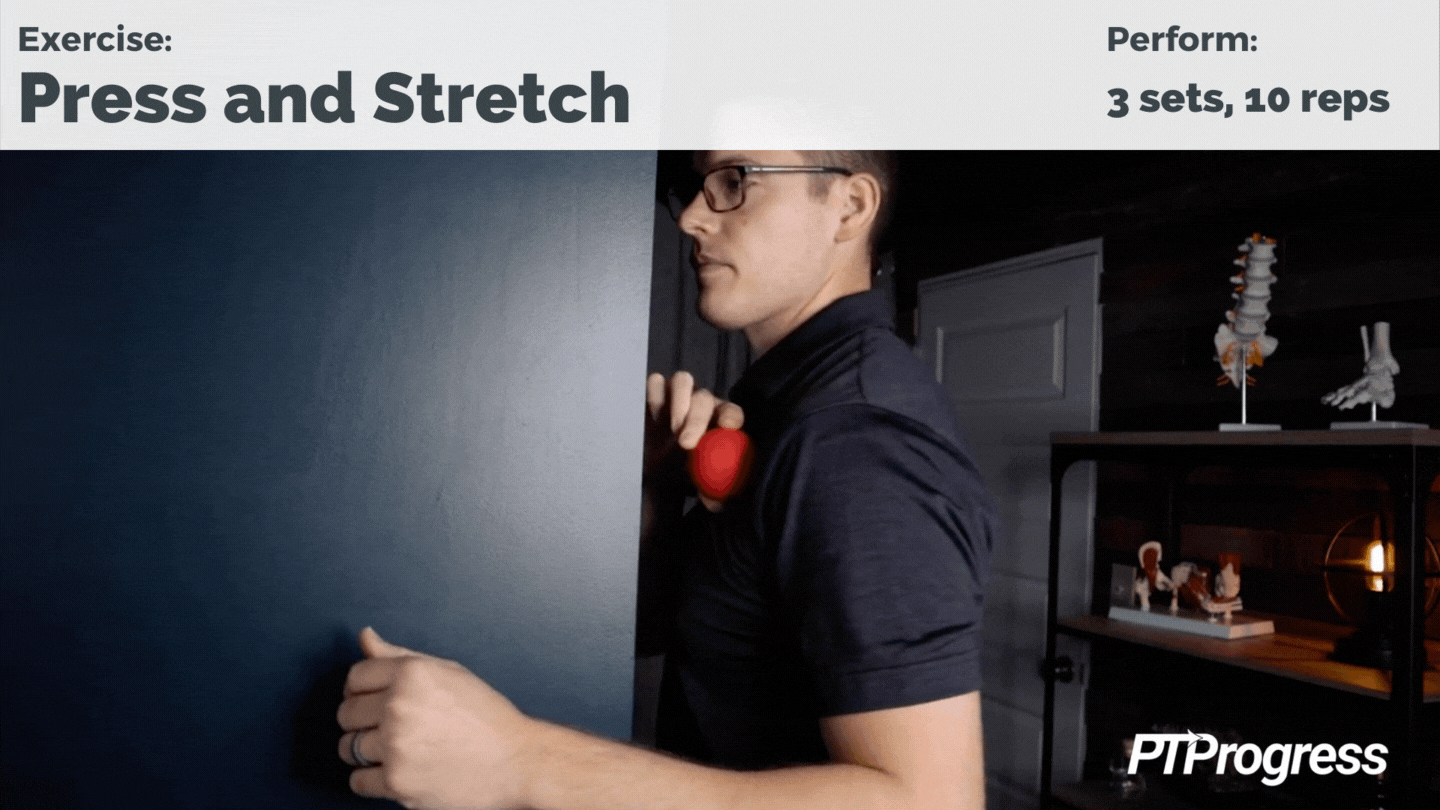
Some people prefer to do this move lying face down on the ground, but standing against a wall works just as well. Not only will this movement stretch your too-tight pec, it will also activate the muscles you use to flatten your shoulders. This simple move can help you retrain your shoulders and fix your posture for the long term.
Try to perform 10 to 15 repetitions of this movement 2-3 times a day.
3. I’s, Y’s and T’s
This exercise is easy to visualize: all you have to do is spell the letters I, Y, and T with your arms!
Lie face down on a mat or bench. Bring your arms straight overhead so your body is one long line. From here, lift your arms together off the ground to spell the “I,” then relax them back down. The “Y” comes next: lift your arms up and out towards the side. Relax briefly before bringing your arms straight out to the sides for the “T.”
Count each sequence of I, Y, and T movements as 1 repetition, and try to repeat the sequence 10 times, totaling 30 movements.
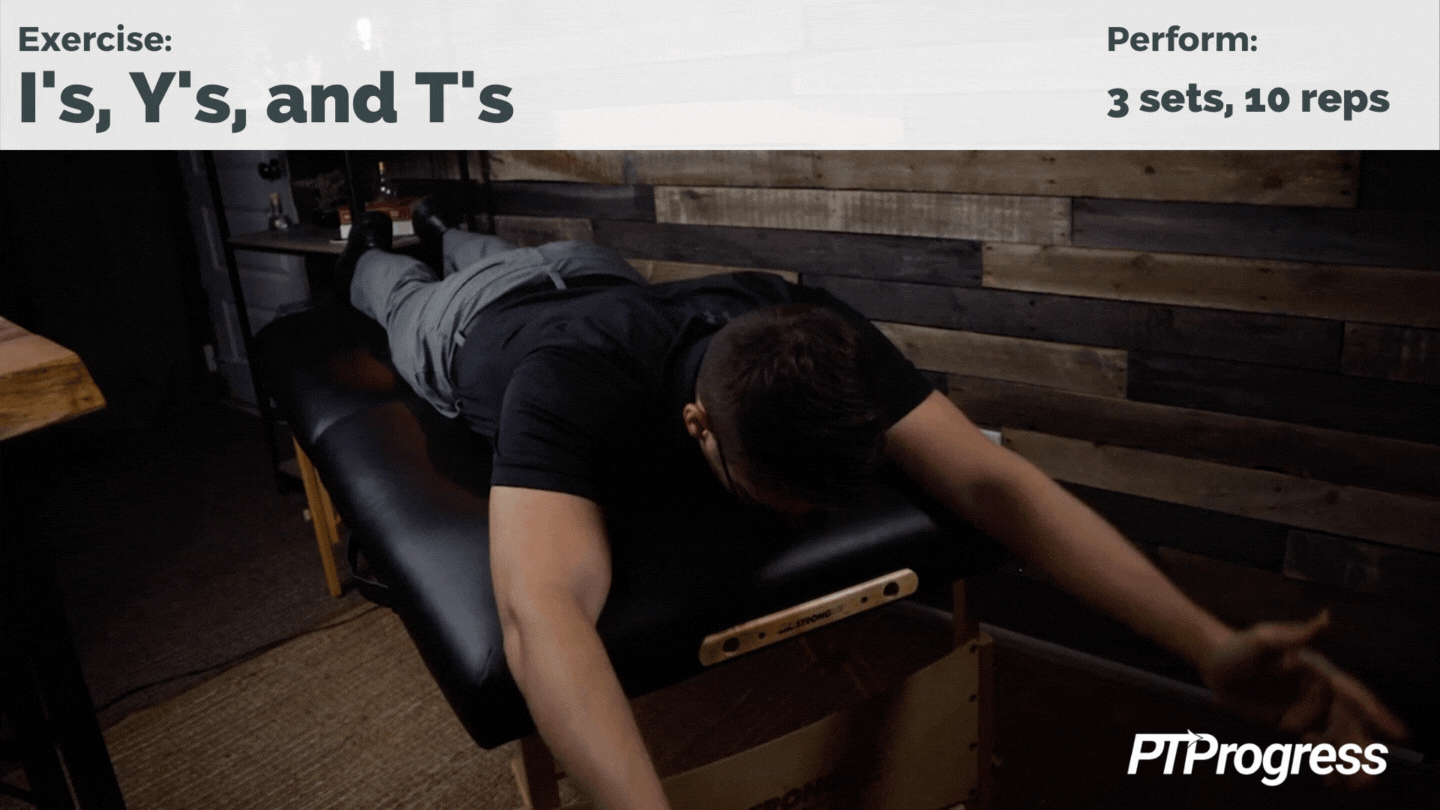
These exercises target the muscles of the mid back and help pull your shoulders away from the rounded position they love to fall into. You’ll really feel this move working your shoulders.
You can modify the exercise by standing against a wall for support. Or, for more of a challenge, perform these movements over an exercise ball. You can also hold onto resistance bands or 1-2 pound dumbbells as you make the letters.
4. Pec/Lat Stretch with Foam Roller
To perform this combination stretch, you’ll need a foam roller – or a rolled-up pillow if you don’t have one. (I highly recommend getting a foam roller, though; it will work wonders for your posture.)
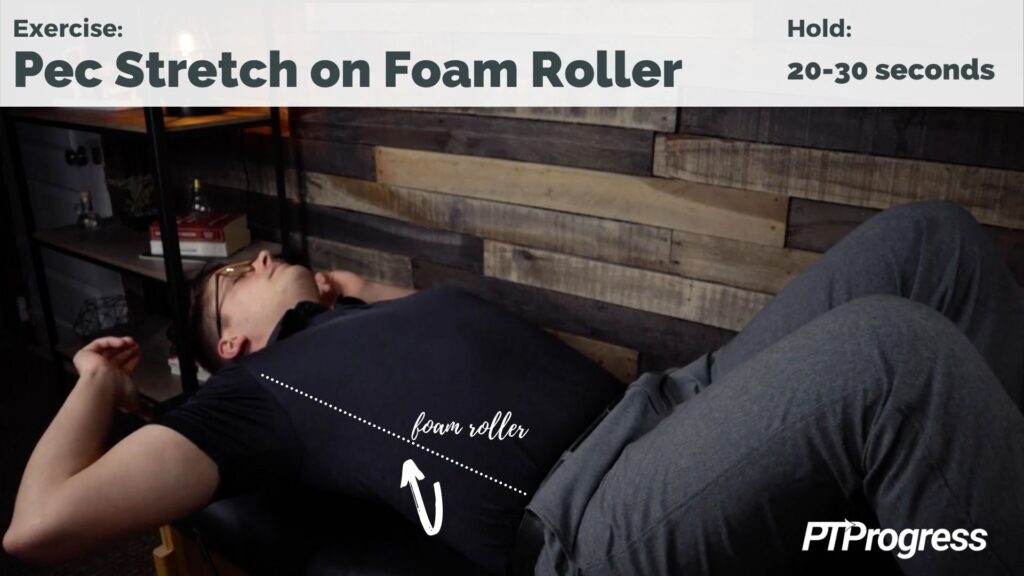
Lie down on the foam roller lengthwise, so it’s beneath your spine. Bring your arms into a “W” position, with elbows slightly bent and palms facing the ceiling. Here you should feel a nice stretch along your pecs; hold this position for 20-30 seconds.
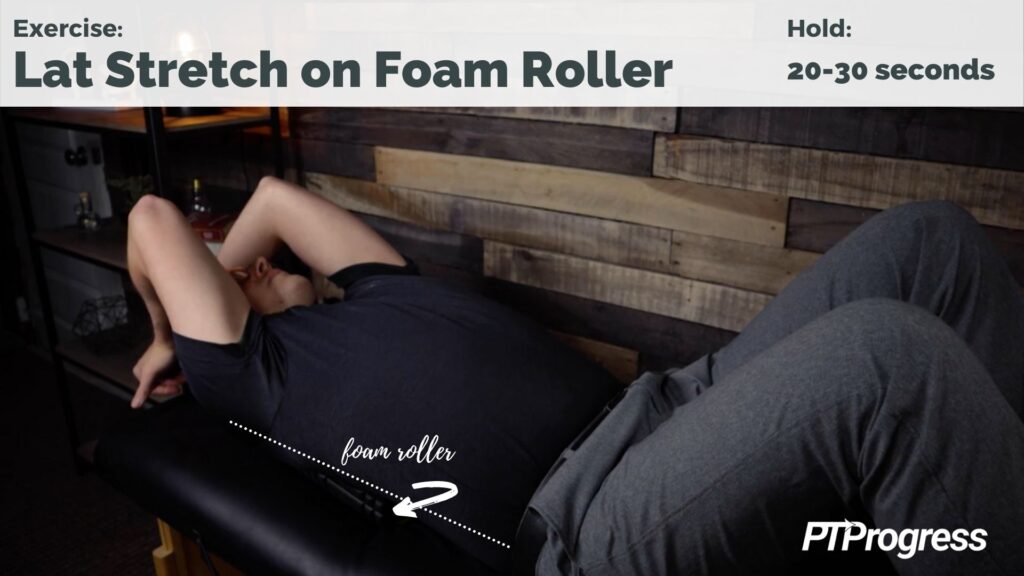
To stretch your lats, bring your elbows in towards each other and drive your hands behind your head as your elbows point to the sky. Stretching your lats will help prevent rounded shoulders, because when this muscle is too tight, it pulls the shoulders inward.
5. Diagonal band movement
You absolutely have to give this final exercise a try. With this diagonal movement, you’ll work your rotator cuff, mid and low traps, and your shoulder through a full range of progressive resistance.
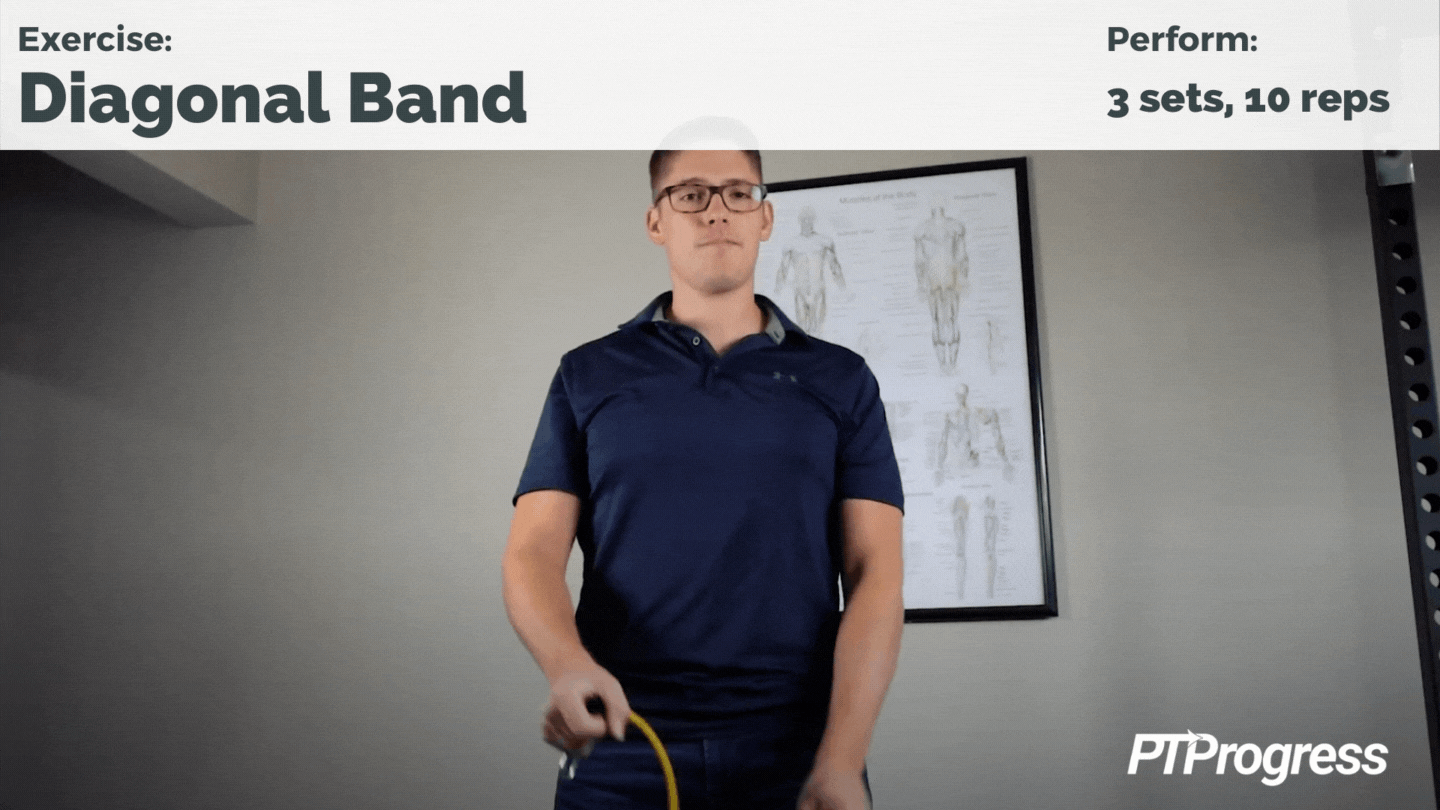
Stand with your feet shoulder-width apart, holding a resistance band in front of your body with one end in each hand. Reach both arms out diagonally in opposite directions at about 30 degrees. Be sure to lead with your thumb pointing to the ceiling; this will open up the shoulder and prevent pinching and popping. Alternate the direction of the diagonal for 20 reps, or 10 on each side.
Workout Sequence to Fix Rounded Shoulders
I recommend performing the moves in the sequence outlined above; it provides a nice variety of moves to fix your rounded shoulder. Altogether, these exercises will loosen things up so you can achieve full range of motion while strengthening the supporting muscles through the range.
Some final thoughts: Whenever you strive to make a lasting change in your posture, understand that it’s going to take effort and consistency. You can’t expect to fix your rounded shoulders by doing this routine just once.
So I recommend working this exercise sequence into your daily routine for the next couple of weeks. Over time, you’ll achieve less tension in your upper body, stronger shoulders, and taller posture.

